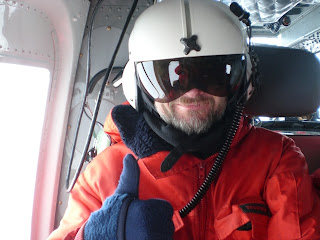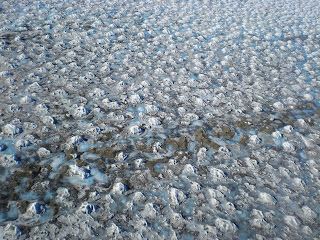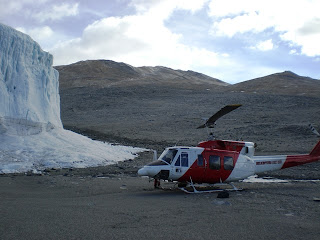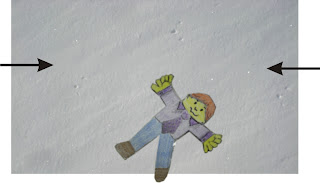 to get home. Flat Stanley went first - Flat Stanley get into the envelope before the nice post office lady gets mad. Hopefully he will get back to Milk River Elementary school in one piece. Look for a special stamp on his envelope. I hope I can get a picture of all of you with Flat Stanley comes back so we can put it on this blog too.
to get home. Flat Stanley went first - Flat Stanley get into the envelope before the nice post office lady gets mad. Hopefully he will get back to Milk River Elementary school in one piece. Look for a special stamp on his envelope. I hope I can get a picture of all of you with Flat Stanley comes back so we can put it on this blog too.I then had to get busy. I had to finish my 'On Ice' report before I packed. Once I packed I had to do the 'Bag Drag' where I took my bags, except for one carry-on, to be put on a pallet that would go on the plane.
 Our plane kept getting delayed as they needed to bring something in and were waiting for it. Finally, we were told to be ready to go at 6:00 am. We made it and all our friends who had to still stay came to say good bye to us - it was sad time a bit as everyone had worked very hard together and made it a very good project. 'Shuttle Bob' drove us out in the big 'Ivan the Terra Bus' (these are actually made in Alberta and you can ride one on the Athabasca glacier in Banff-Jasper parks).
Our plane kept getting delayed as they needed to bring something in and were waiting for it. Finally, we were told to be ready to go at 6:00 am. We made it and all our friends who had to still stay came to say good bye to us - it was sad time a bit as everyone had worked very hard together and made it a very good project. 'Shuttle Bob' drove us out in the big 'Ivan the Terra Bus' (these are actually made in Alberta and you can ride one on the Athabasca glacier in Banff-Jasper parks).We got to the 'Pegasus' runway which they had to move onto the Ice Shelf (which is a floating glacier 80 m thick). Here I am just before getting on the plane and here is one last view of White Island. It was cold and windy when we were leaving. There were some of Flat Stanley's friends leaving with Stacy too. Oddly enough the one on the right is also called Flat Stanley!



We flew again on the C-17 but this time everyone had 'jump' seats. I was very tired and slept most of the way to Christchurch. The C-17 was late to Christchurch so I rushed to return my ECW clothes then hurried back to make my flight to Aukland.

In Aukland I actually got to see something green - and I know this picture does not look like much but when you have not seen anything growing at all it is good to see. Poor Flat Stanley - he will not get to see anything growing until the spring in Canada as he is going all the way home closed up in an envelope! There was not much more to tell - I was just in airports and on airplanes for neary 40 hours till I got home. I finally got to see sunset from my plane between Los Angeles and San Francisco! One thing I was sad about is that I never even got a chance to see the Southern Cross (some stars you can only see from the Southern Hemisphere) or the moon upside down!















































